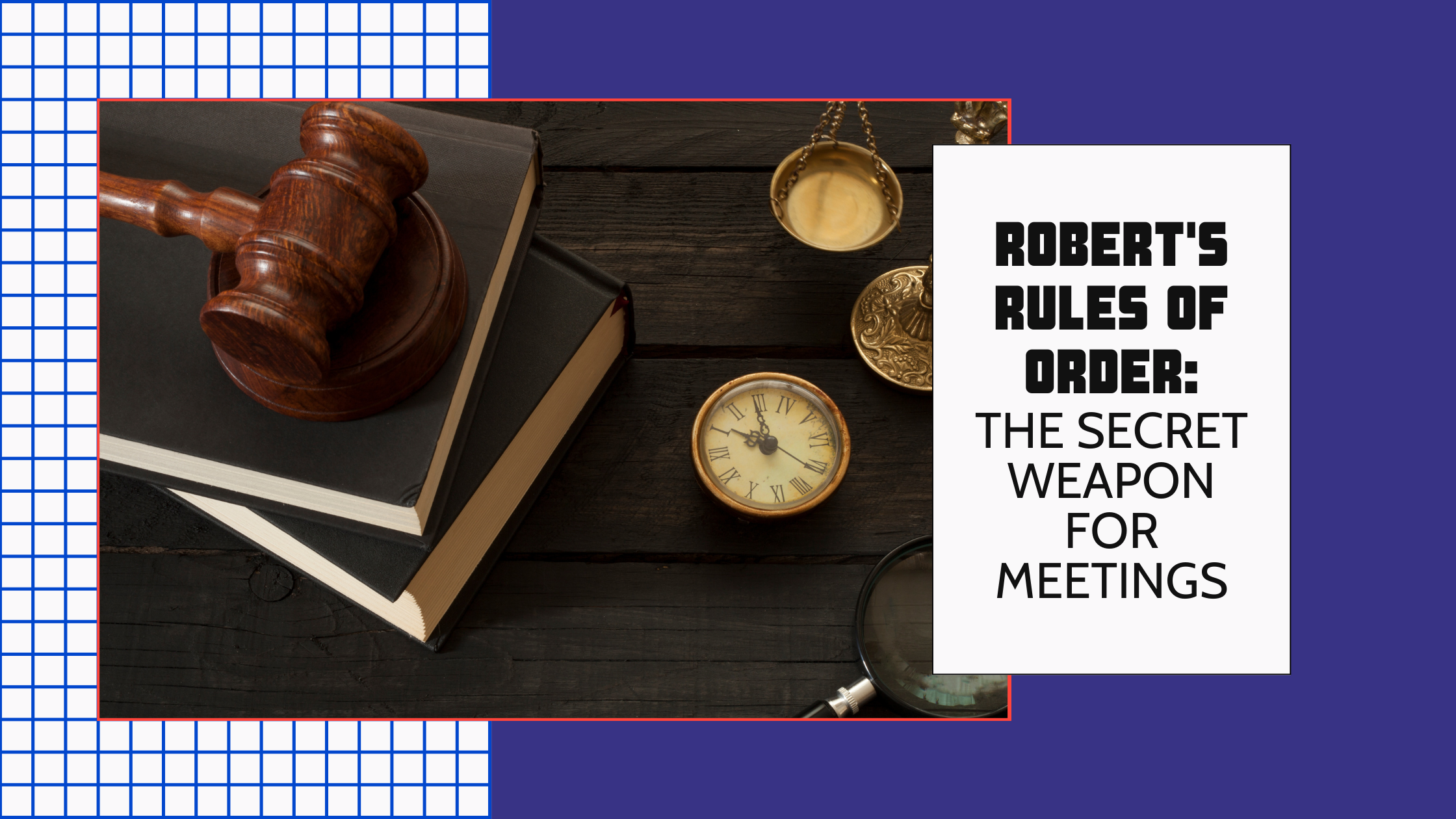Have you ever walked into a meeting, ready to take minutes, to find the person in charge of the meeting has no idea what they are doing? They don’t know how to run a meeting, they don’t know how to make decisions, they don’t know what their role is, and they expect that things will naturally happen.
Instead, we get meetings that are a waste of time, disorganized, and ineffective. And if it is your role to take minutes, they are painful to write as it is often unclear what happened during the meeting other than chaos!
We need a clear framework and guidelines for running meetings. This is where Robert’s Rules of Order comes in. Developed by U.S. Army officer Henry Martyn Robert in the 19th century, this parliamentary procedure is a widely used set of rules that provides a systematic approach to conducting meetings efficiently, fairly, and orderly. The guidelines are designed to facilitate well-run meetings by outlining procedures for managing discussions, making decisions, and even resolving conflicts. They are used in formal settings as well as very casual meetings.
Key Components of Robert’s Rules:
- Hierarchy of Motions: Robert’s Rules establish a hierarchy for motions, which determines the order in which they are considered. This hierarchy ensures that important decisions are addressed before less critical matters.
While your group may not deal with formal motions, you are likely making decisions. This allows you to ensure you are dealing with them properly and fairly.
- Rights of Members: The rules protect the rights of individual members, allowing them to participate in discussions, propose motions, and vote on decisions. This ensures that all voices are heard and respected within the group.
If you’ve ever had a dominating meeting participant, this rule is handy. There are rules about what you’re allowed and not allowed to do. Reminding the group of the rules allows everyone to feel as if they’ve been heard in a meeting.
- Quorum: A quorum is the minimum number of members required to conduct business and is necessary for making decisions for many organizations (not all). This prevents a few people from making decisions without the discussion or support of the larger group. Typically, it means that 50% +1 of your voting members must be involved in making the decision.
I jokingly say that this prevents Jane and me from going out for drinks and deciding that we both get a 50% raise effective immediately. While we like that idea, we don’t have the power to make those decisions alone. We cannot make decisions without the minimum number of voting members involved.
- Voting Procedures: We have a democratic and fair process by understanding how we count votes, resolve ties, and even reconsider decisions.
Politically, there have been many examples of decisions made that someone would object to and demand a “re-vote” for many reasons (but primarily, they didn’t like the result). You don’t get to keep voting on an issue until you get the answer you want. We have rules on voting and decisions, and referring to Robert’s Rules of Order can take a very contentious issue and make it easier to deal with.
- Debate and Discussion: When people are angry, they want to argue. Sometimes, arguing with some mean yelling until the other party agrees. That’s not proper debate and discussion. Robert’s Rules of Order will detail the rules for speaking times, the order of speakers, and how to address the chair.
- Amendments and Modifications: Participants often present an idea they want to adapt (often presented as a motion). During the discussion of the idea, new information or other ideas are usually brought forward, too. Amendments and modifications allow the group to adapt the original idea/motion to consider all ideas presented.
When I started attending senior meetings, my manager did what he wanted and how he wanted it done. His leadership/meeting style was very autocratic. Effectively, his managers were told what to do and expected to do it. He didn’t run meetings properly, and the discussions weren’t fair. They didn’t have a vote in the final decisions. The manager made the decision. The meeting made it look like it was a group decision, but it rarely was.
I wish I had known about Robert’s Rules of Order then. I could have (hopefully) convinced him that if he provided structure to his meetings, they would be more efficient, fair, clear, and consistent.
You can pick up your copy of Robert’s Rules of Order at your favorite online bookstore. The latest version is the 12th edition, published in September 2020.
This article was written by Rhonda Scharf in March 2024 and not be artificial intelligence










